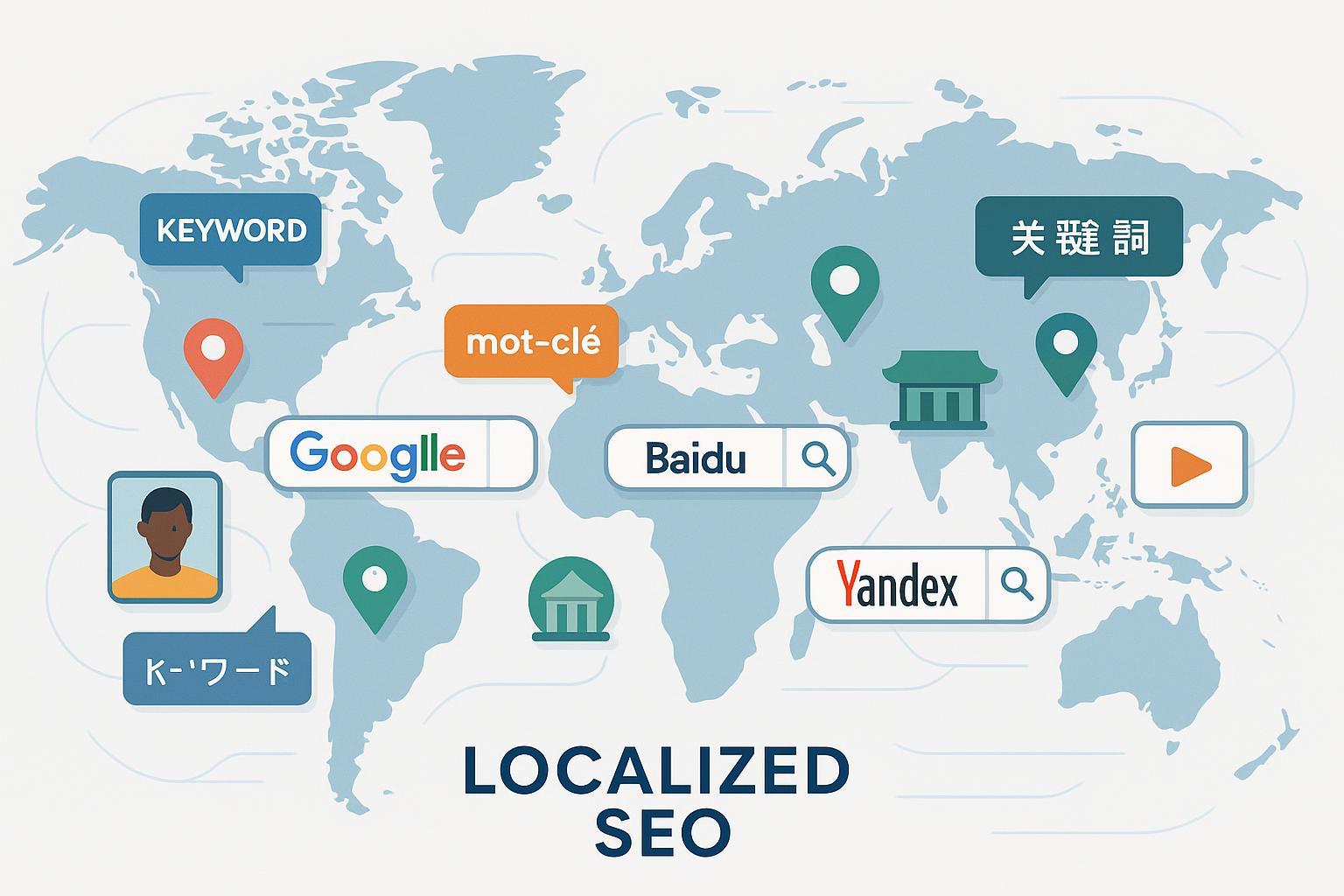What is SEO Localization? Definition, Workflow, and Global Business Impact

One-Sentence Definition
SEO Localization is the process of adapting your digital content and SEO strategies to the language, culture, and search behaviors of specific regional markets, so your website ranks higher and engages audiences in local search engines.¹
Detailed Explanation
Unlike simple translation, SEO Localization involves thorough research and adjustment of keywords, metadata, content structure, technical SEO settings, and user experience for each geographic target. It’s about understanding how local users search (their intent, colloquialisms, and trending topics), which search engines or platforms they use (e.g., Google, Baidu, Naver), and what cultural preferences impact how they interact with your site.
For example, a tech company entering Japan might discover that popular search keywords differ from their original English site—and that page layouts, visuals, and even calls-to-action must adapt to local visitor expectations. Besides content adaptation, technical aspects like implementing hreflang tags, country-specific domains (ccTLDs), and local backlinks are essential for driving visibility and trust in search results.
Key Components of SEO Localization
- Multilingual Keyword Research: Find phrases and search queries locals actually use, not just translated terms.
- Content & Metadata Adaptation: Rewrite titles, descriptions, alt text, and main content to match the linguistic and cultural context.
- Technical SEO Configurations: Use hreflang tags, regional subdirectories or top-level domains, local sitemaps, and ensure fast load times in each market.
- Cultural & UX Adjustments: Adapt visuals, examples, payment methods, and calls-to-action for regional resonance and trust.
- Backlink and Authority Building: Earn links from reputable local domains and cultivate region-relevant partnerships.
- Continuous Analytics Monitoring: Track performance separately for each region/language to refine content and SEO over time.
Practical Applications & Real-World Impact
Businesses use SEO Localization when expanding to new geographies—common cases include SaaS companies, ecommerce, and publishers. For instance, Ahrefs localized its Japanese blog with native keyword research and culturally relevant content, boosting organic Japanese traffic significantly. Netflix customizes show descriptions, promotion strategies, and metadata for different markets to grow user engagement worldwide.
Crucially, effective localization isn’t just about language: entering China, for example, means optimizing for Baidu (not just Google), adhering to local tech standards, and mirroring local UX norms—mistakes here can mean invisibility despite translated content.
Related & Confusing Concepts: Glossary
- SEO Translation: Simple conversion of SEO elements into another language, without adapting meaning or local search intent.
- Content Localization: Broader process of adjusting all content (visual, textual, technical) to fit in with a locale, beyond SEO.
- International SEO: The overarching strategy for global search presence—can include SEO Localization and translation, but may not go as deep into culture or language nuances.
- Geo-targeting: Delivering content or ads based on a visitor’s physical location; a tactic within international SEO.
- hreflang: HTML attribute signaling to search engines which language or regional version of a page to display.
Why SEO Localization Matters
SEO Localization is the foundation for reaching and converting international audiences. It drives discoverability, builds authenticity and consumer trust, increases conversions, and, most importantly, gives you an edge over competitors stuck with one-size-fits-all content. For a global growth strategy, it’s indispensable—and done right, it delivers measurable business impact.
References:

